Kuala Lumpur, the vibrant capital of Malaysia, is a must-visit city for anyone exploring Southeast Asia. From its humble beginnings to its rapid growth, Kuala Lumpur (map) has become a captivating destination and ranks among the world’s most popular cities. With a myriad of attractions and activities, there is no shortage of things to do in Kuala Lumpur. While the gleaming skyscrapers and expansive shopping malls catch the eye, a deeper exploration reveals a rich tapestry of cultures, tantalizing cuisines, captivating colonial and Art Deco architecture, bustling markets, and pockets of serene greenery. Join me as I present an array of suggestions for first-time visitors, highlighting the top things to do in Kuala Lumpur, as well as exciting day trip ideas from the city.
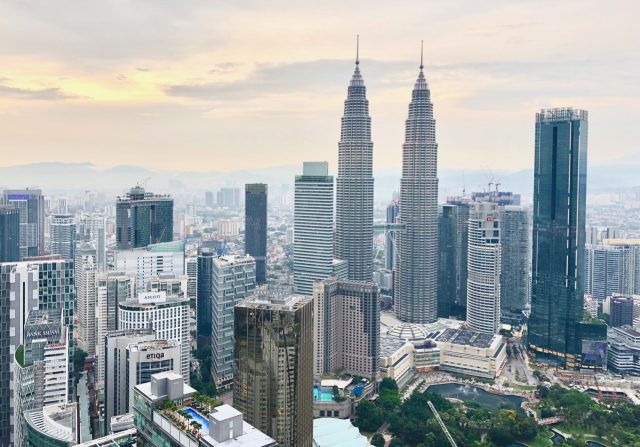

Things to do in Kuala Lumpur
1. Admire the spectacular skyline
Kuala Lumpur’s spectacular skyline begs to be seen from a high vantage point, and preferably in the evenings when the city lights are on. Nothing is quite as impressive as the brightly-lit Petronas Twin Towers in the evenings. There are many places to get an incredible view of Kuala Lumpur such as the KL Tower (a telecommunications tower with an observation deck) and the Petronas Twin Towers. At Banyan Tree Hotel, head to the rooftop Vertigo Bar for unbeatable views of Kuala Lumpur! Head there just before sunset.
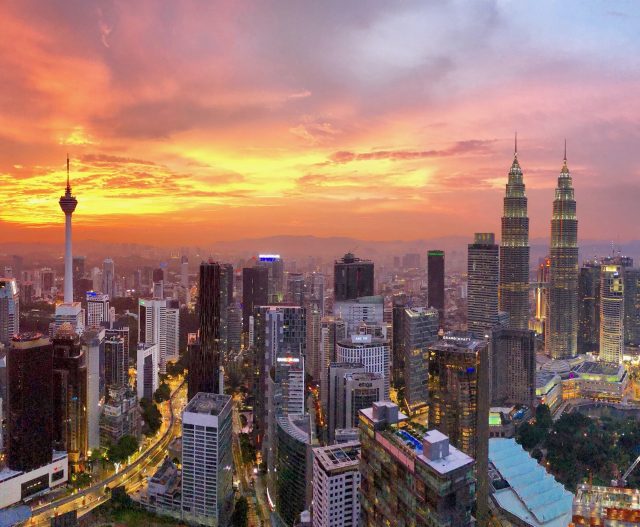
In the evenings, a colourful light show is projected onto KL Tower.
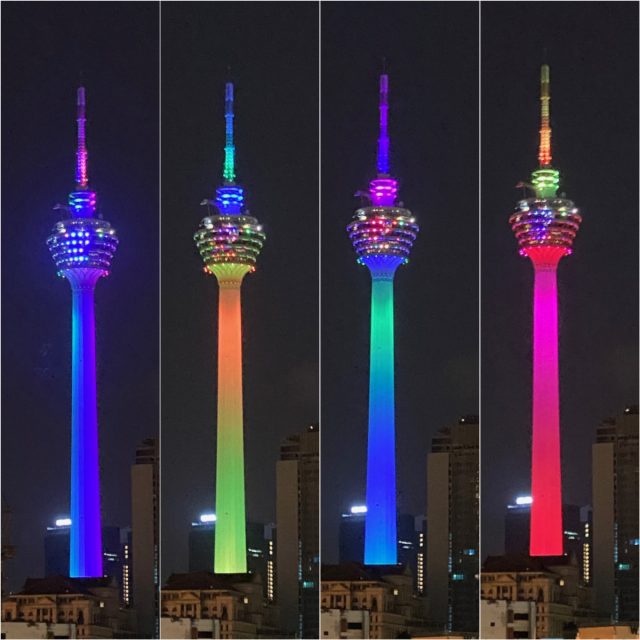
Kuala Lumpur hotels with amazing city views
The Four Points by Sheraton Hotel in Chinatown has a ‘rooftop bar’ with great views. Located on the 7th floor, the JANN Bar, though not the highest, offers beautiful views of the Kuala Lumpur skyline and the Merdeka 118 tower, the world’s second-tallest building.
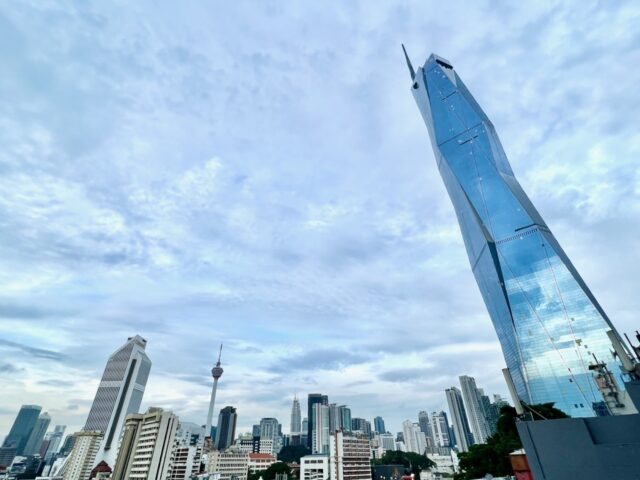
You can also stay at hotels such as the Mandarin Oriental, Four Seasons, Traders Hotel, Grand Hyatt (read about mu stay at the Grand Hyatt, my personal favourite in KL), EQ Kuala Lumpur and Banyan Tree Hotel which have stunning views of the skyline and the Twin Towers.
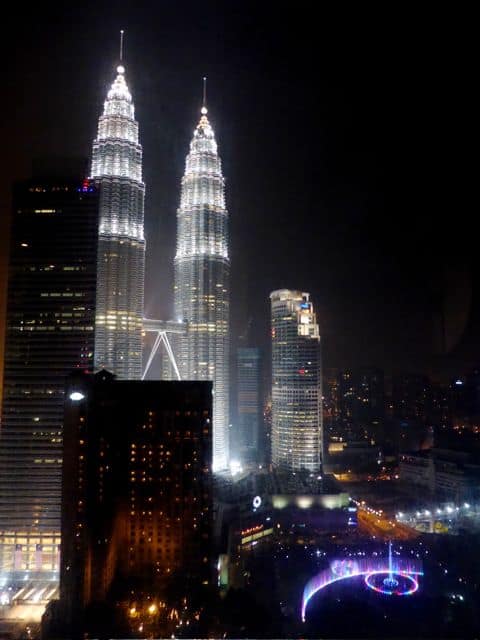
2. Visit the Petronas Towers at KLCC
The Petronas Twin Towers rise majestically in the Kuala Lumpur City Centre (KLCC). At 452m, they were the tallest buildings in the world between 1998 and 2004. Nowadays, they still hold the record for being the tallest twin towers in the world. Getting up close to these imposing towers, you begin to understand how they’ve become a Kuala Lumpur icon. The design, by Argentine architect César Pelli, is both awe-inspiring and timeless. Of all the things to do in Kuala Lumpur, seeing the Petronas Twin Towers up close is a must!
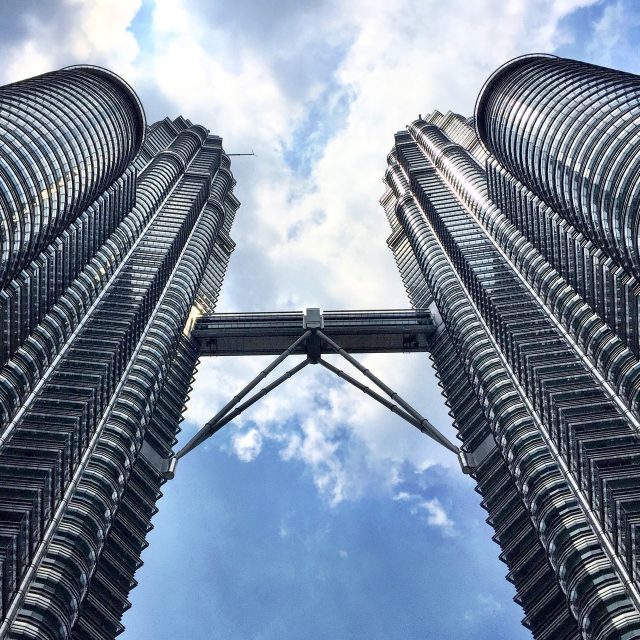
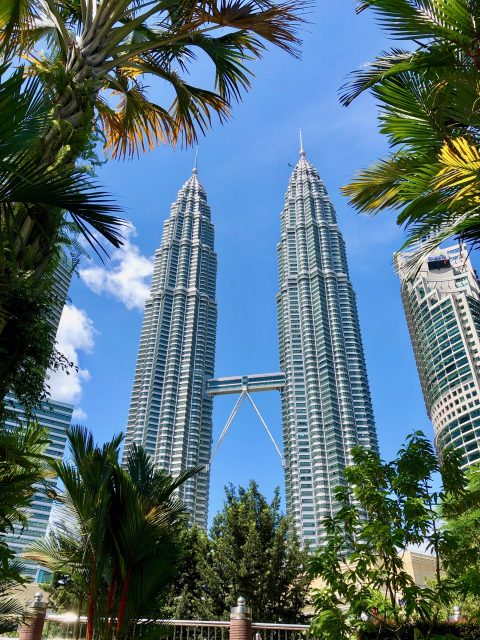
You can opt to visit and cross the Skybridge on the 41st floor and continue to the observation deck on the 86th floor but I always prefer a view of the Kuala Lumpur skyline with the twin towers in it. 😉
Saloma Link
Another tip: in the vicinity of KLCC, a five-minute walk from the Twin Towers, you’ll find another KL attraction, which is especially striking in the evenings: the Saloma Link, a futuristic bridge that spans the Klang River and highways.
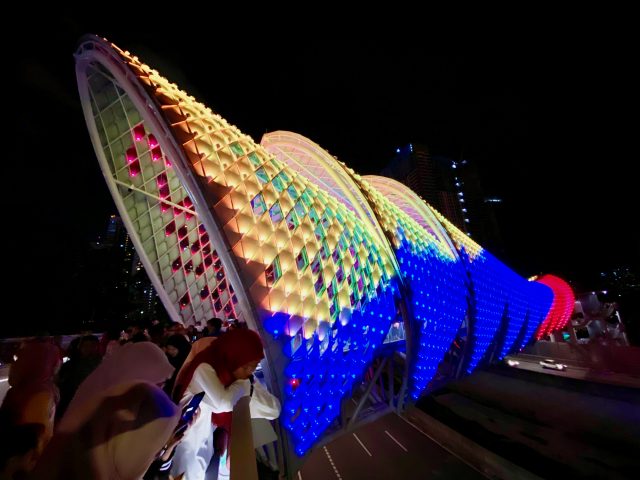
3. Explore Chinatown
Chinatown can be found in the old town of Kuala Lumpur. With its busy streets and colonial/post-war buildings, the old town and Chinatown remain the roots of the city. In this district, you’ll find a myriad of shops selling all sorts of food and merchandise, and beautiful religious and cultural monuments such as the Chan She Shu Yuen Clan Ancestral Hall.
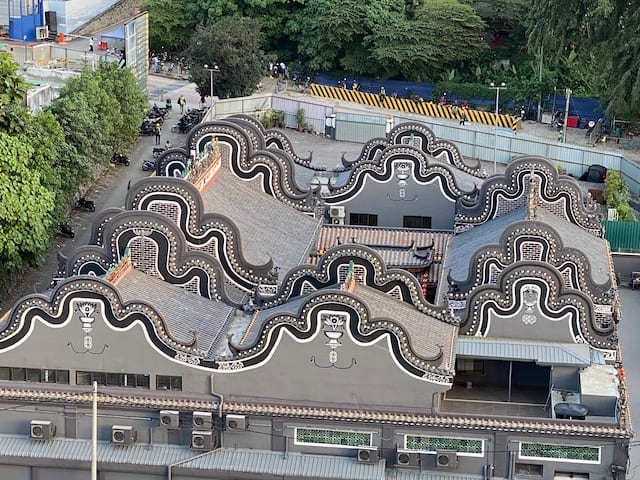
Petaling Street market
At the Petaling Street Heritage House, you can learn about the history and heritage of the Chinese community in Kuala Lumpur. In the heart of Chinatown is Petaling Street, an atmospheric outdoor market with hundreds of stalls selling merchandise and food. Don’t forget to bargain!
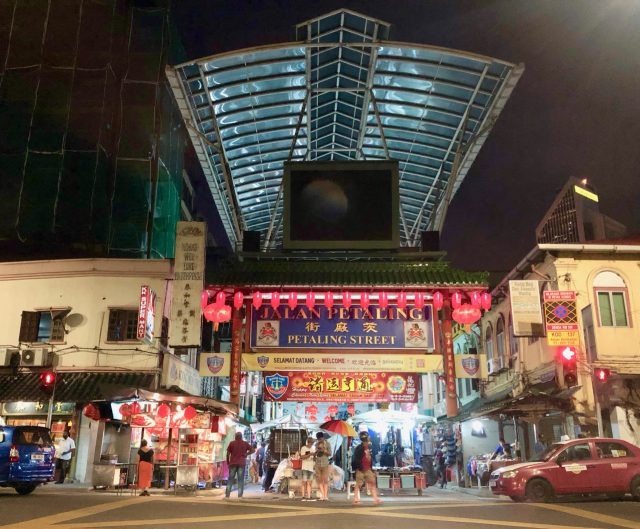
Central Market
Close to Petaling Street, you’ll find Central Market, a popular place for local art and handicraft.
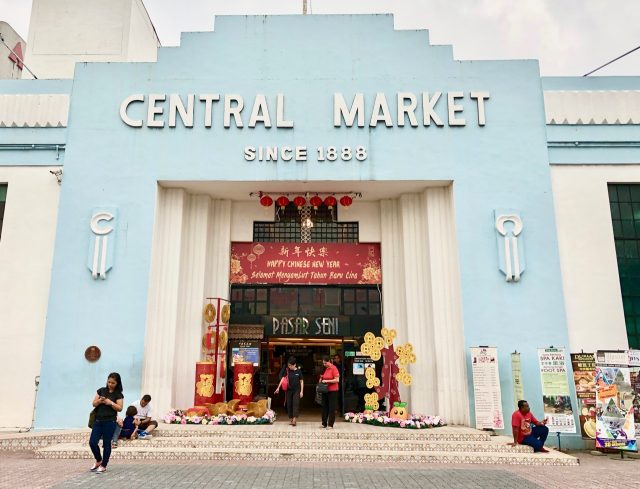
Kwai Chai Hong
Just off Petaling Street is a cluster of historic houses with hidden lanes and courtyards. This area is called Kwai Chai Hong, a popular place packed with restaurants, bars and colourful murals.
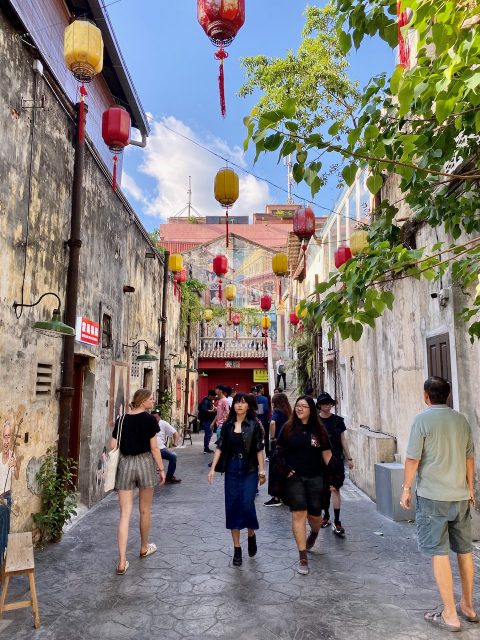
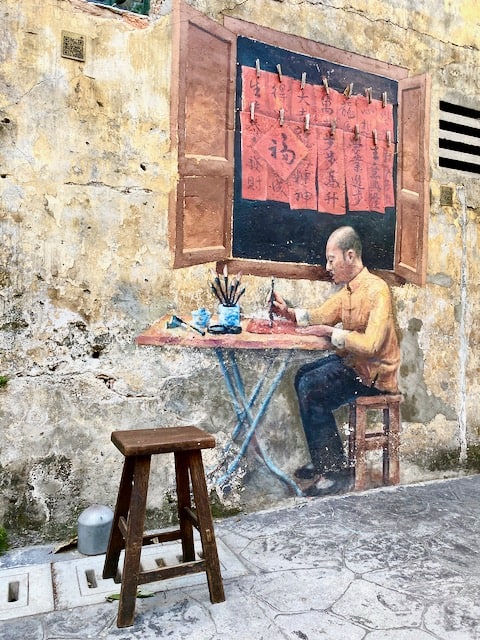
At the edge of Chinatown, along Jalan Bandar, visit the beautiful Sri Mahamariamman Temple. Completed in 1873, this is the oldest Hindu temple in Kuala Lumpur. Read more about my stroll around Chinatown Kuala Lumpur.
4. Visit Kuala Lumpur’s historic landmarks
A stone’s throw from Chinatown are many of Kuala Lumpur’s most famous historic landmarks, such as Merdeka Square (where Malaya’s Independence in 1957 was proclaimed), the Moorish-style Old Railway Station, the National Mosque (with its electric blue dome) and Jamek Mosque at the confluence of the Klang and Gombak Rivers (redeveloped as the KL River of Life).
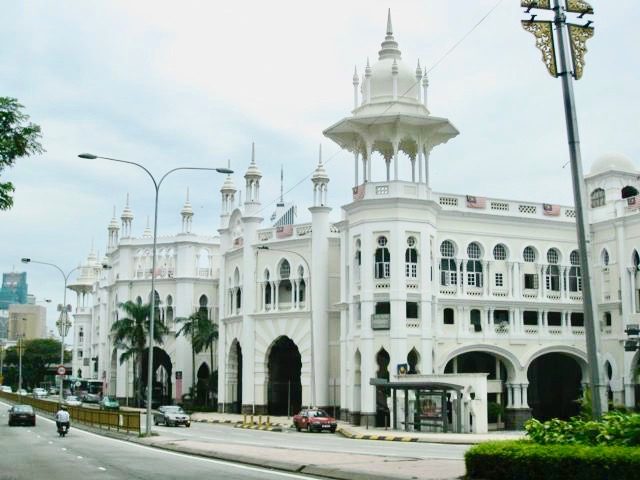
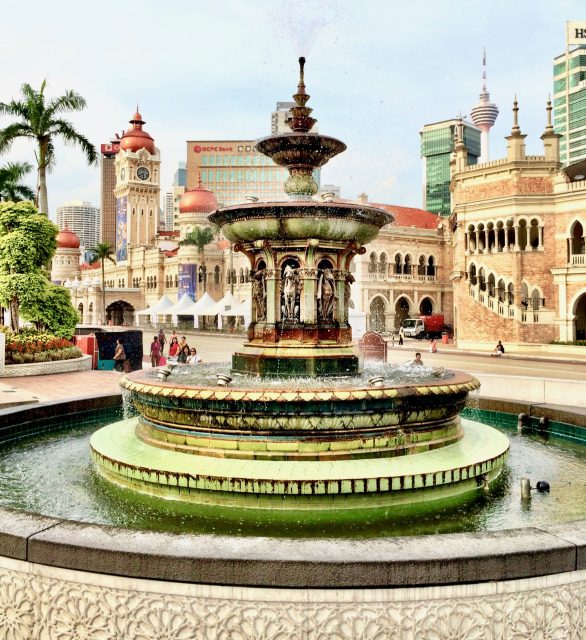
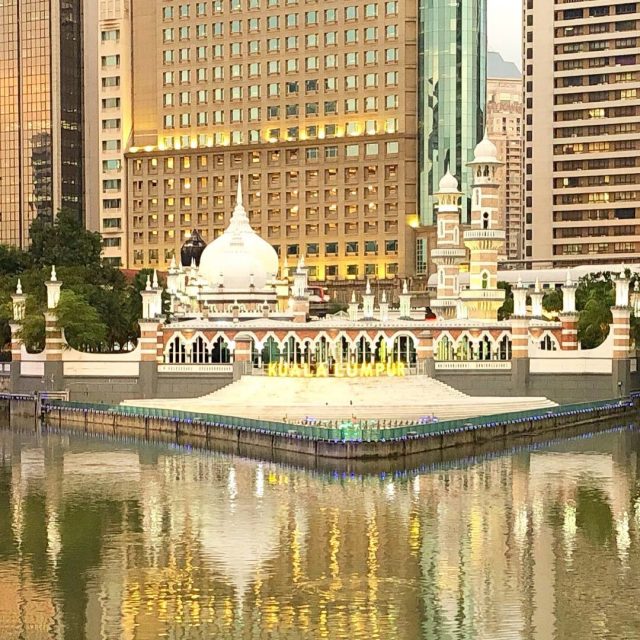
The birthplace of Kuala Lumpur
The confluence of the Klang and Gombak Rivers, widely acknowledged as the birthplace of Kuala Lumpur, has been redeveloped as the KL River of Life. The riverfront features promenades along the banks of the rivers. At certain times of the day (I was there at 7:30pm), visitors are treated to a beautiful water and light show, with the Jamek Mosque as the centrepiece.
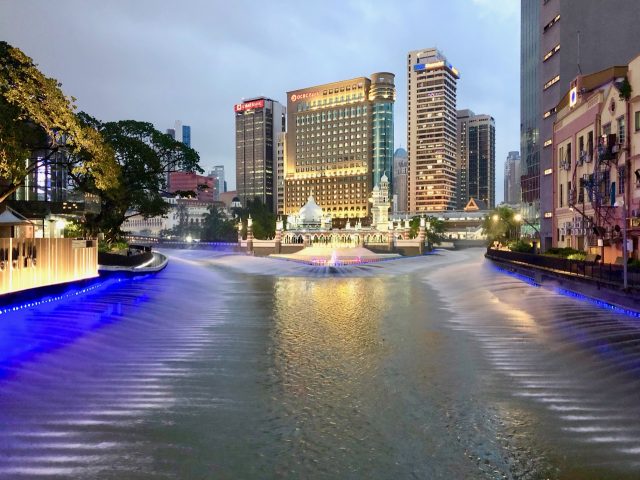
5. EAT!!
This is my favourite thing to do in Kuala Lumpur as the city is a true culinary paradise! From cutting-edge fine-dining to food courts and roadside stalls, Kuala Lumpur offers foodies a dizzying array of cuisines and eateries.
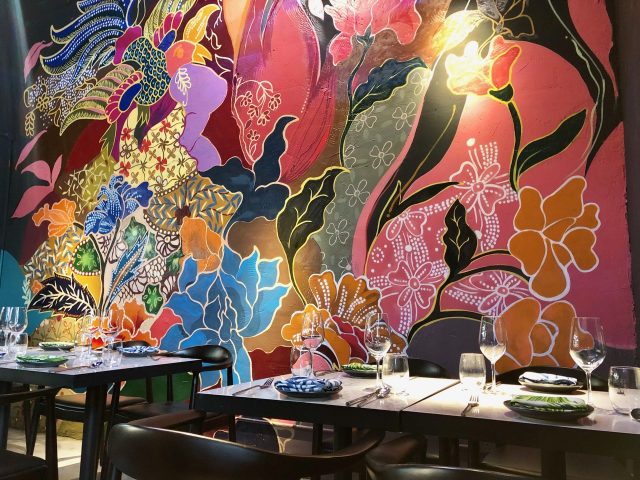
Ease your way into Malaysian/Asian cuisine at one of the food courts which can be found in the basements of many shopping malls. My favourite food courts can be found in Pavilion mall and Lot 10. Try local and other Asian specialties such as assam or curry laksa (spicy noodle soups), fried kuey teow (fried noodles), nasi lemak (rice with a spicy prawn sambal), satay and fried Hokkien mee. Pavilion mall also has more upmarket Asian options on the 6th floor.
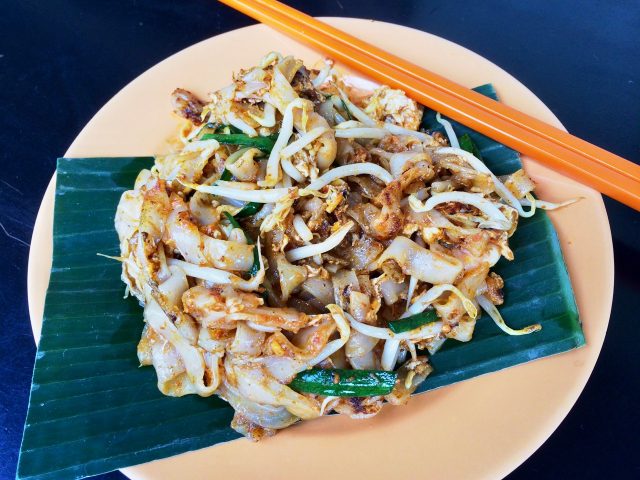
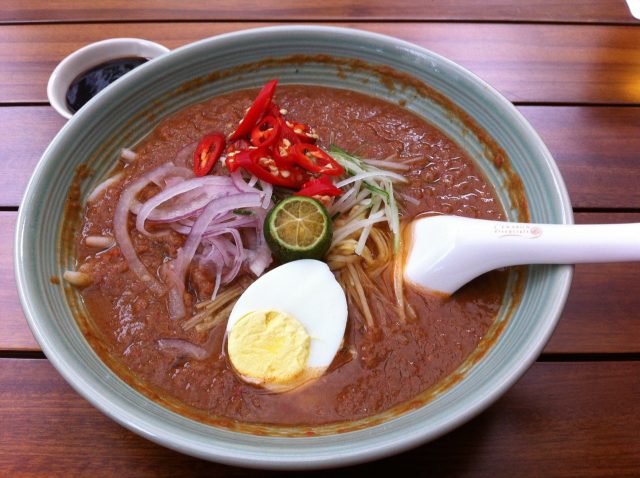
Street food in Kuala Lumpur
For a street food dining experience, head to Jalan Alor (Alor Street). Located parallel to Jalan Bukit Bintang, Jalan Alor is often regarded as the heart of KL’s local cuisine. The hundreds of food stalls serve a mind-boggling variety of Malay, Chinese, Indian, Thai and Indonesian specialities. The atmosphere is electric and the many types of food available will leave the first-time visitor in a daze. Try the satay (lamb or chicken skewers served with a spicy peanut sauce) or the grilled stingray.
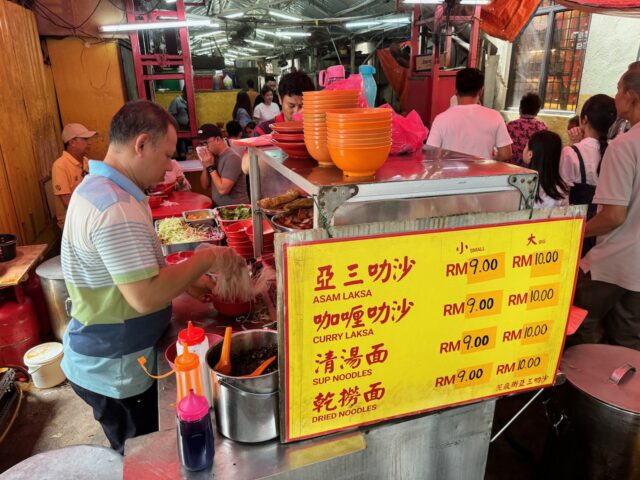
Another popular area for street food is Petaling Street in Chinatown, in the market itself as well as along Jalan Sultan (street).
For a taste of India, head to Brickfields or Little India (the district next to KL Sentral or Central Station). Here, you’ll find ornate Hindu temples and a variety of restaurants which specialise in ‘banana leaf’ (the leaf is your plate, and you choose a variety of curries, fish, meat and vegetables) as well as nasi kandar (white or flavoured rice with a variety of curries and side dishes) and a host of vegetarian options.
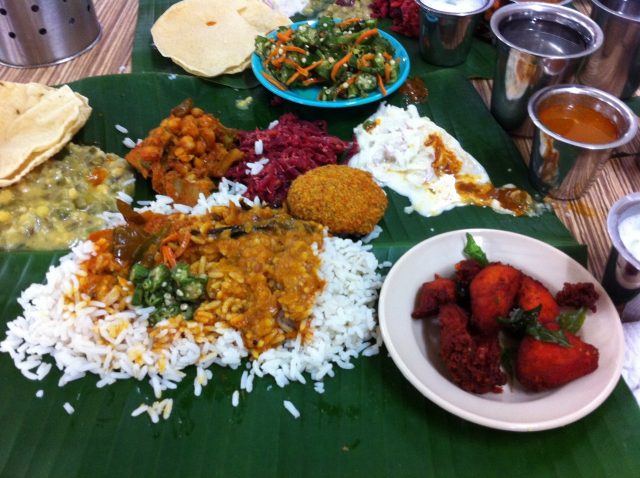

6. Shop till you drop
From swanky high-end malls along Bukit Bintang Street and KLCC to roadside stalls in Chinatown, KL is a shoppers’ paradise! There are countless shopping malls in Kuala Lumpur (Malaysians love their malls!). There’s a stretch of malls along Bukit Bintang Street, with Pavilion and Starhill Gallery as the swankiest malls. Suria, at the foot of the Petronas Twin Towers, and TRX Exchange are also popular malls.
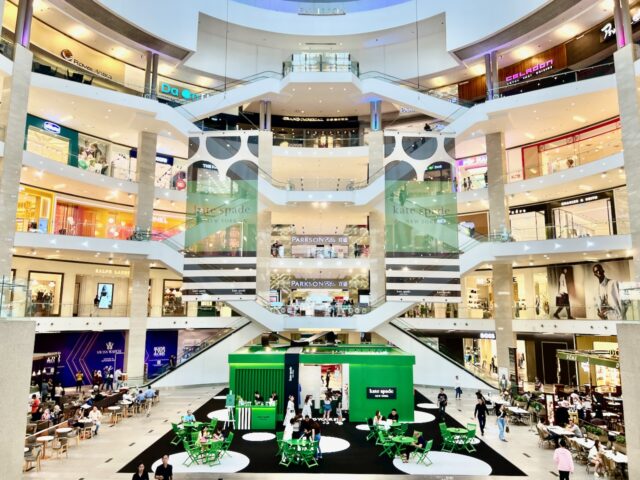
Read about my stay at The Ruma Hotel, a five-star hotel near the major shopping districts of KLCC and Bukit Bintang.
In the suburbs, you’ll find others such as Mid Valley Megamall and the adjacent Gardens Mall, 1 Utama and Bangsar Shopping Centre (BSC). There are literally too many to mention.
7. Visit Perdana Botanical Gardens
Formerly known as Lake Gardens, Perdana Botanical Gardens is a green lung near the city centre that’s home to a variety of attractions such as the KL Bird Park (billed as the largest walk-in aviary in the world), Orchid Garden, Hibiscus Garden and Butterfly Park.

8. Visit Batu Caves
Located 13 km north of KL, the Batu Caves are an intriguing place. A massive limestone outcrop houses a series of caves, cave temples and numerous shrines. Batu Caves is the focal point for Malaysian Hindus during the Thaipusam festival every year.
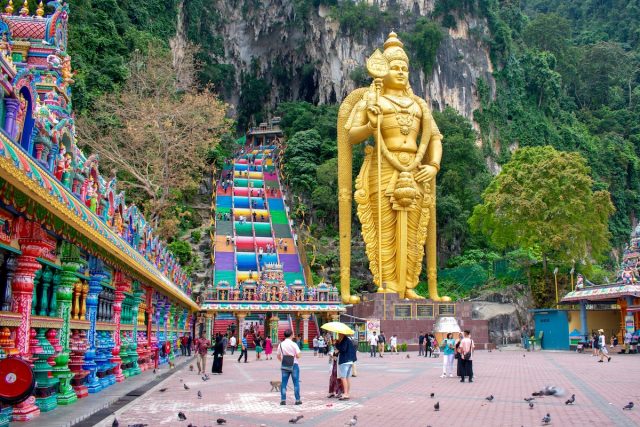
Get ready to climb the 272 steps to the main cave temple. To help you along, the steps feature a rainbow of electric colours! Beware of the monkeys – they’re known to snatch belongings. You can easily visit Batu Caves as a half-day trip from Kuala Lumpur.
9. Hike in a tropical forest in the city centre!
Established in 1906, the Bukit Nanas (Pineapple Hill) Forest Reserve is the last remaining virgin tropical forest in the city centre. Now known as the KL Forest Eco Park, there are various trails including a canopy walk. You can easily combine a hike in the park with a visit to the Menara KL (KL Tower) next door. The entrance is at the car park of KL Tower.
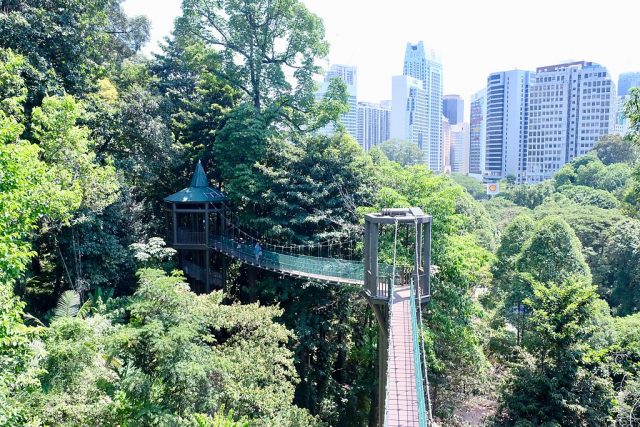
10. Go on a day trip
There are many places to visit around Kuala Lumpur. Go on a day trip to the UNESCO Heritage city of Melaka, experience the enchanting fireflies in Kuala Selangor, head up to Genting Highlands (literally a city of entertainment in the sky, at about 1800m!) or visit Putrajaya, the administrative capital of Malaysia. You can visit Genting Highlands and Batu Caves on a full-day tour.

Read about things to see in Melaka.
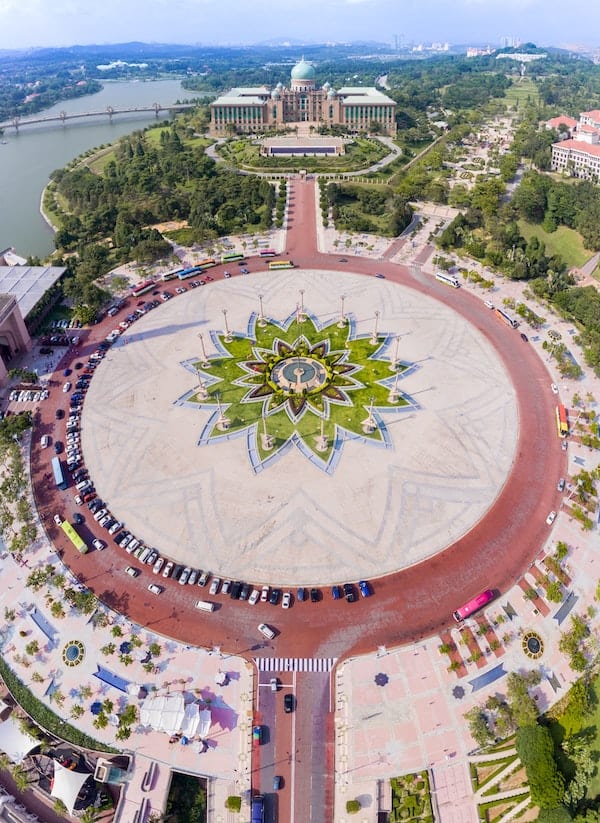
Getting to Kuala Lumpur
The Kuala Lumpur International Airport (KLIA 1) and the adjacent low-cost terminal (KLIA 2) are the main gateways to Kuala Lumpur and Malaysia. KLIA is a major hub for flights to quite literally every corner of Southeast Asia and numerous cities in China and India. KLIA is connected to the city (KL Sentral or Central Station) by the KLIA Express train that takes 30 minutes.
Depending on your nationality, you may need a visa to visit Malaysia. Check the Malaysia visa requirements and apply for an online visa here.
A modern network of highways and bus routes connect Kuala Lumpur with all parts of Peninsular Malaysia, Singapore and Thailand.
Getting around Kuala Lumpur
Kuala Lumpur has an extensive network of public transportation ranging from bus services to the LRT/MRT light rail and the KL Monorail. GoKL is a free bus service that runs various routes in and around the Kuala Lumpur city centre. There are also many taxis as well as Grab (the Southeast Asian equivalent of Uber) services.
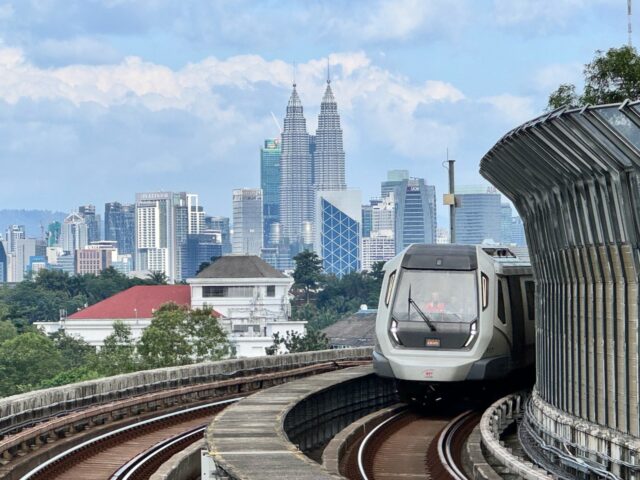
Where to stay in Kuala Lumpur
Kuala Lumpur has some of the cheapest five-star accommodations in the world so go ahead and splurge a little! During the off-peak and shoulder seasons, you can book a room at a super luxurious hotel for around USD 200/night (and it can be even cheaper when there are special offers)! My personal favourite hotels in Kuala Lumpur include the Grand Hyatt (my favourite!), Mandarin Oriental, Four Seasons, The Ruma and the Shangri-La.

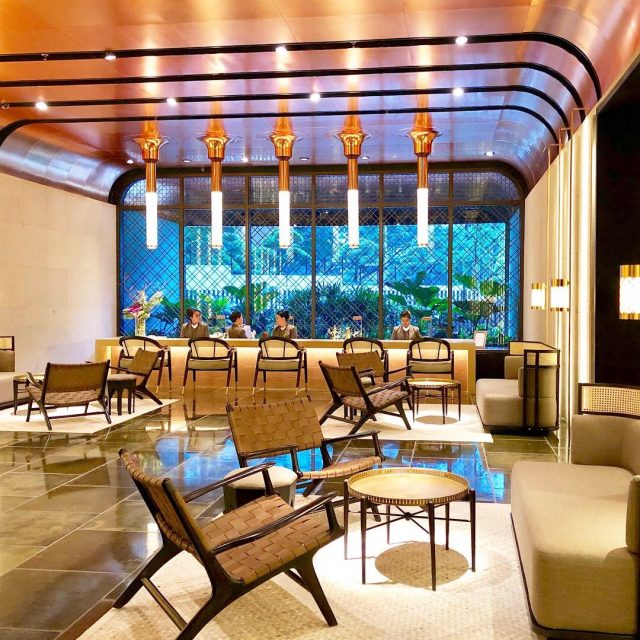
Read other Velvet Escape posts on Malaysia:
- Ten things to do in Penang
- Ten islands to visit in Malaysia
- The Kinabatangan River safari
- Nostalgic street art in George Town


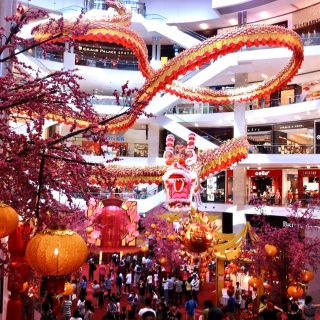
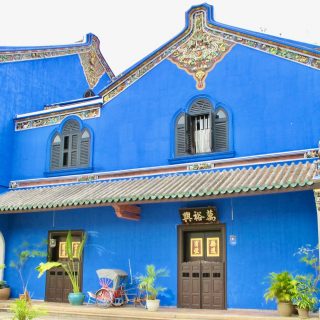
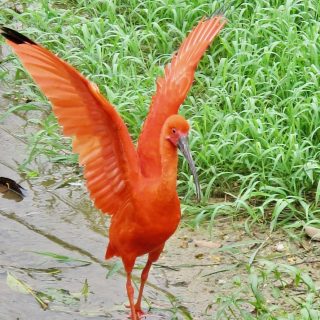
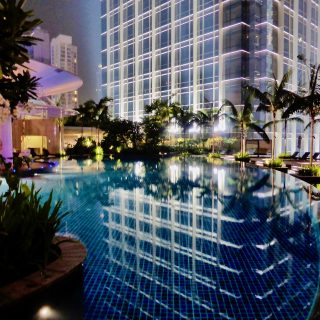






[…] Read about things to do in Kuala Lumpur […]
[…] Read about things to do in Kuala Lumpur. […]
[…] Read about the best place to see the Kuala Lumpur skyline or about things to do in Kuala Lumpur. […]
[…] Malaysians love to shop. I believe the favourite national pastime in the weekends is strolling through one of the many shopping malls. For the locals, it’s a family-outing or a way of spending time with friends. It’s also a great opportunity to people-watch or escape the scorching tropical heat outside! For tourists, Kuala Lumpur is a true shoppers’ haven. The number of malls and the variety of products are simply mind-boggling. In addition, the favourable exchange rate of the Malaysian Ringgit against major currencies makes shopping one of the best things to do in Kuala Lumpur. […]
[…] The city I called home for 17 years. Kuala Lumpur looks a lot different now compared to the sleepy place I knew when I was growing up. This city has developed so fast in the past 20 years that I’m always amazed each time I return. The Petronas Twin Towers are the city’s biggest icons but there are lush parks, bustling markets, massive malls and a world-class foodie scene all waiting to be discovered. Read about things to do in Kuala Lumpur. […]
[…] Read about things to do in Kuala Lumpur. […]
[…] Read about things to do in Kuala Lumpur. […]
[…] then, that I had to see this with my own eyes! Well, it just so happens that I visit my family in Kuala Lumpur a few times a year so it wasn’t too difficult to plan a visit to Changi Airport to see Jewel. […]
[…] Street, with its famous street market, lies in the heart of Chinatown and is one of the recommended things to do in Kuala Lumpur, but on this visit, I decided to skip the market but instead visit the new attractions […]
Awesome!
Have planning for a trip to Kuala Lumpur. Thanks for sharing this will be of great help.
[…] to visa requirements for mainland Vietnam). I double-checked that fact, and since I was already in Kuala Lumpur, I quickly made plans to visit Phu Quoc for three days with my best […]
[…] Ten things to do in Kuala Lumpur […]
[…] Ruma Hotel and Residences is a new addition to the five-star hotel scene in Kuala Lumpur. Located in the Kuala Lumpur City Centre (KLCC) district, a stone’s throw from the […]
[…] Article by: Ten things to do in Kuala Lumpur | Velvet Escape […]
[…] Read the accompanying post: “Ten Things To Do in Kuala Lumpur“. […]
Thanks Keith.
This information is useful and handy.
HI Keith,
This will come in handy when we’re in KL next month!
Bethaney
Awesome! Thanks John for the update on the Petronas towers. Enjoy your trip.
Cheers,
Keith
Keith,
Thanks for this list. We pretty much followed it.
For #3, the entrance to the Petronas Sky Bridge is no longer free. We paid MYR 50 for adults (>12 years old) and MYR 25 for children.
John
[…] Ten things to do in Kuala Lumpur […]
[…] Kuala Lumpur Bird Park is home to the largest walk-in aviary in the world, and is one of my Top-10 must-do’s in Kuala Lumpur. The KL Bird Park was opened amidst the scenic Lake Gardens in 1991 and currently houses more than […]
[…] Ten things to do in Kuala Lumpur […]
This is a great article on Kuala Lumpur. Definitely agree that the Twin Towers is a must visit =)
[…] Ten things to do in Kuala Lumpur […]
[…] Ten things to do in Kuala Lumpur […]
[…] Ten things to do in Kuala Lumpur […]
good referances. planing to visit in May.
Great tips about KL. I spent about two months there and mostly enjoyed the food. I hung out around Central Market quite a bit where there are some fantastic eateries and interesting things to do. A restaurant called Hameeds serves the best Tandoori I could ever imagine! I would also recommend the “KL all you can eat Durian Buffet”, that is an adventure!
[…] was in Malaysia recently, among others, to attend an awards ceremony where one of my posts “10 things to do in Kuala Lumpur” won a prize. At the ceremony, I had the privilege to meet many Malaysian bloggers. Blogging […]
This blogpost meets the requirement of our Blog4FT blogging contest. You should submit this post to us but you have to repost or change the date to 5th October 2009 onwards to be eligible. You can also submit any post dated 5th October 2009 onwards and related to Federal Territories of Malaysia as your submission. Come join and win a Peugeot 308! Visit http://www.blog4ft.com/ or http://www.facebook.com/pages/Blog4FT/130983666025
I visited KL twice in 2006. I loved the place. (except for the traffic and I live in Southern California) Very nice people, GREAT food, beautiful city and country.
[…] Ten things to do in Kuala Lumpur […]
i totally agree with keith about the good food. I live in Singapore but travel to KL and Perak frequently. So, I must say that the food in Malaysia is super nice ….
Thanks for the comment Andy. I just returned from KL last Tuesday. Great to hear you’re enjoying your trip. Enjoy Australia too! 🙂
Cheers,
Keith
You’re right about KL tower. The Petronas are amazing and it’s great that they let you up for free but the view from KL is better: it’s higher AND you get to see the Petronas!
Batu Caves was excellent to. Six weeks into our trip now, KL was the second destination and still my favourite!
Andy
I am sure my favorite activity there would be shopping, lots of bargains must be awaiting the smart buyer !
Hi there,
Thanks so much for your comment. Yes, I agree with you that the prices at the stalls in Petaling Street can be a rip-off. However, the experience of walking down the street and observing the vendors and the locals is absolutely rewarding. Petaling Street is absolutely the place to test your bargaining skills. 🙂
The food in Chinatown is excellent. I would also suggest exploring the neighbourhood such as the side streets of Petaling Street and Jalan (street) Sultan. The hawker stalls along Jalan Sultan offer some amazing Chinese food too. My favourite is the stall near the Five Elements Hotel and directly opposite a shop called Despotic. It serves awesome fried noodles in black sauce with roast pork. It’s the stall’s signature dish so you can’t go wrong. Actually, the name of the dish is the direct translation of ‘signature dish’ in Cantonese, I believe!
Best regards,
Keith
Hi, I’m Malaysian and I agree with most of the places that you recommend, except that Batu Caves could be quite boring http://www.travel-living-bliss.com/morning-work-out-in-batu-caves/
Central Market is a good place to shop for local handicraft, but we don’t usually shop in Petaling Street in Chinatown as the prices there are a complete rip-off. Even Malaysians don’t trust the vendors in Petaling Street, unless you’re a very good bargainer.
But the food in Petaling Street is excellent, provided you know which stalls are the good one. But if you’re a tourist who does not look like local, be prepared to be slaughtered. Don’t look for fancy restaurants/stalls in Petaling Street, look for those that look old but authentic, the price could be more reasonable and the food tastes better.
Thank for the comments Carla & Mindy!
Mindy, the monorail station entrance from the street is still the same. However, if you’re crossing over from the Central (rail) Station, yes, there is a different path now as some construction work is going on between the Central Station & the monorail station. It’s a bit of a long detour but there are signs. I’m not sure if the Putra & Star LRTs are connected now. To be honest, I haven’t been on the LRT in years!
Cheers,
Keith
I keep looking for cheap flights…. when I find one, I’ll know where to go!
I lived near KL in 2004-2005 — been back to visit once, in 2008. I wrote a printable guide (free) for folks who want to see the sights. It has some of the same things you mentioned, velvet, but it also includes some transportation tips!
http://mindymcadams.com/malaysia/visit_kl.htm
I heard that the monorail station at Stesen Sentral has a different entrance now — true or not?
Also, I think I read that Putra and Star LRT are now connected — true or not?
Thank you Amy. I’m sure you’ll love Malaysia. The awesome food itself is a major reason to visit! 🙂
Cheers, Keith
I have yet to explore Malaysia other than cross the border. This is great for my future reference. 🙂 Definitely have to plan a trip there.